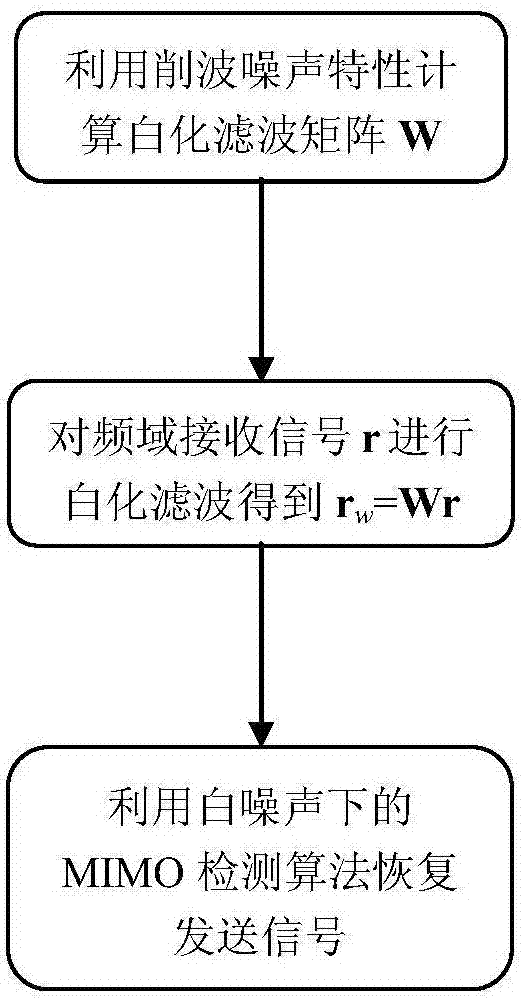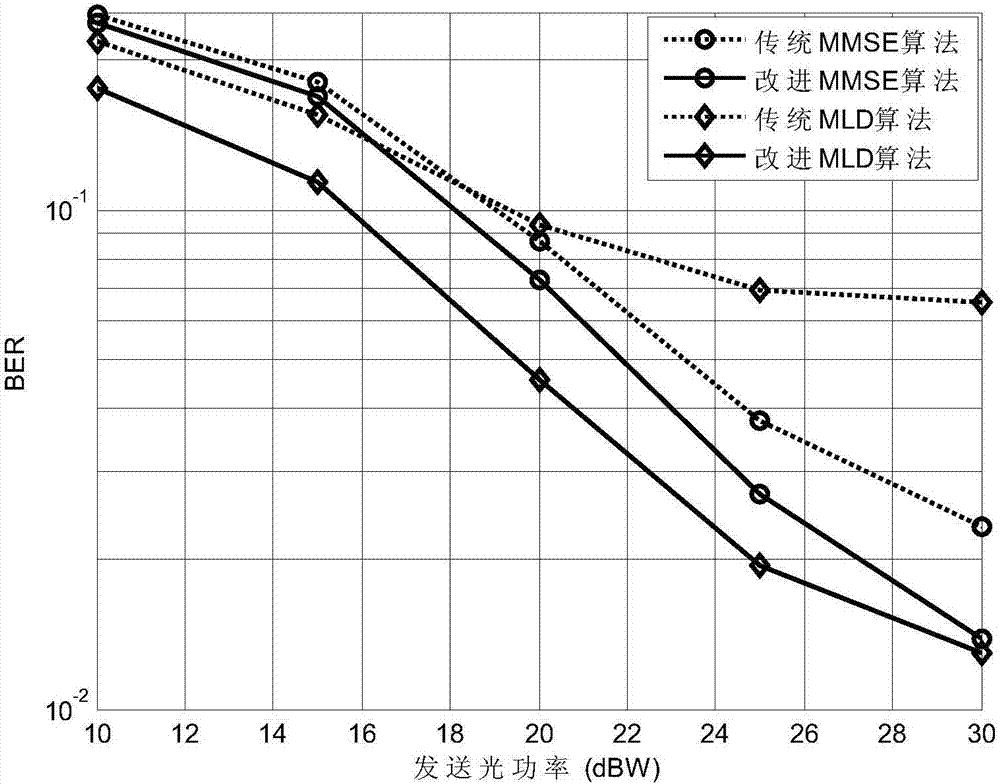mimo DCO‑OFDM communication method, signal receiving device and system
A communication method and technology at the receiving end, applied in the field of MIMODCO-OFDM communication, can solve problems such as reducing power utilization, and achieve the effects of reducing hardware requirements, reducing adverse effects, and significantly increasing bit error rate performance
- Summary
- Abstract
- Description
- Claims
- Application Information
AI Technical Summary
Problems solved by technology
Method used
Image
Examples
Embodiment Construction
[0034] Below in conjunction with accompanying drawing, technical scheme of the present invention is described in detail:
[0035] The idea of the present invention is to eliminate the adverse effects caused by the clipping noise at the receiving end by whitening filtering for the clipping noise generated by the clipping operation at the transmitting end.
[0036] Although clipping is inherently a nonlinear operation, in order to simplify the theoretical analysis, a linear approximation model is usually used (see [S. Dimitrov, S. Sinanovic, and H. Haas, "Clipping Noise in OFDM-Based Optical Wireless Communication Systems," Communications, IEEE Transactions on, vol.60, no.4, pp.1072-1081, Apr.2012]) to characterize clipping noise. Under this model, the equivalent received noise of the MIMO DCO-OFDM system will no longer be white noise, that is, the correlation matrix of the noise vector is an off-diagonal matrix. Therefore, the receiver should whiten the noise before recoveri...
PUM
 Login to View More
Login to View More Abstract
Description
Claims
Application Information
 Login to View More
Login to View More - R&D
- Intellectual Property
- Life Sciences
- Materials
- Tech Scout
- Unparalleled Data Quality
- Higher Quality Content
- 60% Fewer Hallucinations
Browse by: Latest US Patents, China's latest patents, Technical Efficacy Thesaurus, Application Domain, Technology Topic, Popular Technical Reports.
© 2025 PatSnap. All rights reserved.Legal|Privacy policy|Modern Slavery Act Transparency Statement|Sitemap|About US| Contact US: help@patsnap.com



